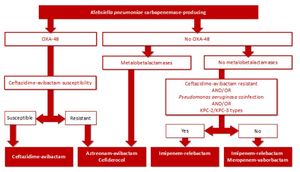Mowi, the world’s largest producer of farmed salmon, has found itself at the center of controversy following the mass escape of approximately 27,000 farmed salmon from its facilities along the northern coast of Norway. The incident was reported over the weekend when stormy weather caused damage to underwater netting at the company’s farm off the municipality of Dyrøy, located above the Arctic Circle and part of the Troms province. This event marked the escape of nearly one-quarter of the company’s total stock of 105,000 salmon, with each fish averaging around 5.5 kilograms.
The situation has raised significant ecological alarms. Jacco van Rijssel, ecologist at Wageningen Marine Research, comments, “If the farmed salmon spread out at sea, they will attempt to breed with wild salmon. The resulting hybrids are typically less fit for survival, leading to genetic dilution of the wild salmon population.” This concern is heightened by studies showing genetic influences from farmed salmon have already tainted two-thirds of Norway's wild salmon.
Pressure is mounting for both Mowi and Norwegian authorities to act swiftly. Following the escape, the government instructed the company to implement measures to catch the escaped fish. Mowi has announced a reward of 500 Norwegian kroner (approximately 48 euros) per fish caught, increasing the catch area beyond the usual 500-meter limit around fish farms. This initiative aims to encourage professional fishermen to help reclaim the lost stock at designated reception centers.
The ramifications of this escape could extend far beyond the immediate loss of salmon. Environmental activists have labeled the incident “an ecological disaster” for wild salmon species. The interbreeding of farmed and wild salmon not only threatens genetic variety but also exacerbates competition for spawning grounds and introduces diseases, such as sea lice, which can harm wild fish populations. Van Rijssel noted, “These farmed salmon carry sea lice, leading to open wounds which could eventually be fatal.”
The cause of the current decline is debated among experts. Factors like climate change and overfishing are blamed, with many arguing the latter is no longer the key issue, as regulatory changes have limited salmon fishing. Andreas Bjelland Eriksen, Norway’s Environment Minister, admitted to the “existential threat” facing North Atlantic salmon but recently rejected calls for stricter open-net farming regulations, instead proposing acceptable levels of genetic contamination.
The issue reflects broader concerns about sustainability within Norway’s aquaculture industry, which annually exports around 1.2 million tons of farmed salmon. The wild salmon population, once thriving, has seen historical lows, prompting fishing bans across 33 rivers since last summer—a number which could soon increase as the situation deteriorates. Some experts predict more rivers and fjords may face similar fishing restrictions as wild populations struggle to rebound.
It’s evident this recent mass escape poses serious questions about the future of both farmed and wild salmon. With reports emphasizing the low survival rate of hybrids and competitive pressures for breeding grounds, the incident leaves environmentalists calling for immediate reform and stricter policies for aquaculture practices.
The fishing community has been quick to respond, with local fishermen ready to capitalize on the financial incentive set by Mowi. Yet, there are concerns from environmental groups about the long-term ecological impacts of these fish entering the wild. “The escape of 27,000 farmed salmon is catastrophic for wild salmon populations,” stated one environmental organization. Without swift action and informed dialogue, the balance between farming practices and the health of wild populations could tilt perilously.



